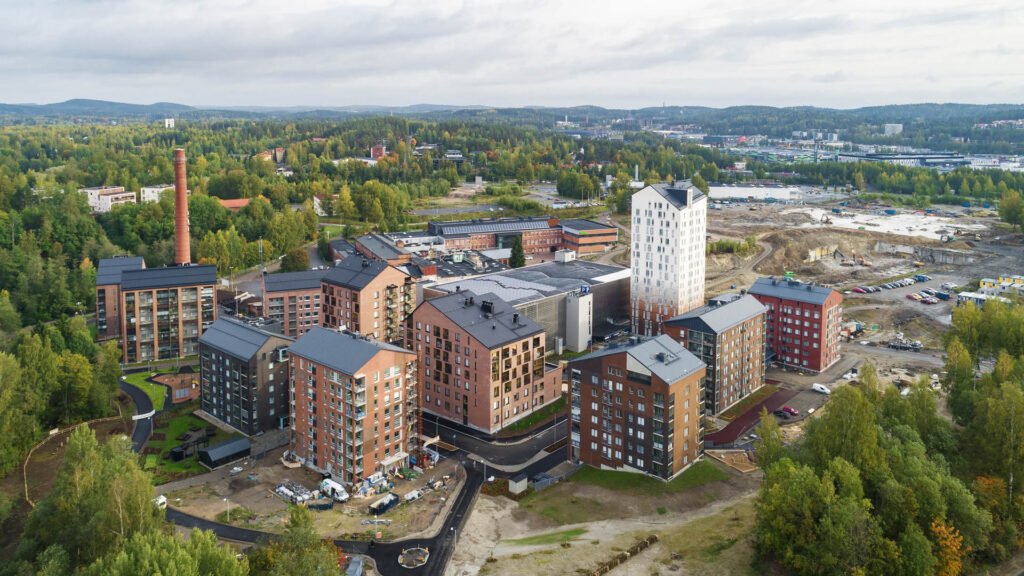A working group set up by the Ministry of the Environment has completed recommendations for the development of state-subsidized housing production and its management. The working group's view on the role of subsidized production largely corresponds to RT's view: state-subsidized production should be targeted more effectively at low-income and vulnerable people, and subsidized support should be used judiciously to stabilize construction cycles.

The key changes supported by RT are the following: State-supported housing production would not have requirements or official instructions that differ from other housing construction. The process of granting subsidies for state-supported housing production and the administrative procedures of the center will be made more efficient. Contract forms commonly used in the construction industry must be possible. The production support of the short-term interest subsidy model aims to have a countercyclical effect on the economic situation and the short-term interest subsidy model will be developed. It is important that the annual target amounts of ARA production are guided and reviewed by the state in a predictable long-term manner in the future.
The background to the working group's work was Petteri Orpo the government programme, a previously completed report on the development needs of state-supported production and the Government's decisions on the public finance plan for 2025–2028. The task of the working group was to examine the forms of support, financing and financing risks of state-supported housing production and to prepare proposals for legislative and other changes to be initiated.
The working group was chaired by the Secretary of State. Mika Nykänen The working group consulted extensively with industry stakeholders, cities and representatives of special groups, including RT. The chair of the working group also met with representatives of RT's member companies.
Summary of the working group's recommendations:
- After the start of work on the state-supported housing construction center The process of granting subsidies for state-supported housing production will be developed and streamlined and the center's administrative procedures, for example, processes related to granting interest-subsidized loans.
- In connection with the closure of the Ara Fund The income accumulated in the fund is transferred to the budget.In the future, an appropriation will be allocated from the budget for interest-subsidized loans, guarantees, agreements and grants.
- Let's review the regulations and guidelines affecting state-subsidized housing construction, including the Aran guidelines, so that Regulation could be simplified and the costs of state-subsidized housing production could be controlled. The basic principle should be that state-supported housing production does not have requirements or official guidelines that differ from other housing construction. In state-supported housing production, contract forms commonly used in the sector must be possible. The approval of plot prices is part of the interest subsidy loan processing process. Practices are being developed for arranging parking in state-supported housing production projects so that parking is financed in a way other than with an interest subsidy loan. Parking should be arranged on market terms.
- State-subsidized housing production will need to be targeted more effectively in the future for low-income and disadvantaged people and that production is reduced. With production subsidies The aim is to influence the cyclical fluctuations in housing construction (countercyclicality), which would mainly use short-term interest rate subsidies. Also in a recovery situation, costs and especially rent levels should remain below market prices in state-subsidized housing production. In addition, state-subsidized housing production should recognize that role in preventing segregation. The working group also recommends the use of acquisition loans as a housing policy tool alongside loans for new construction.
- For rental housing construction The loan term of new loans with a long interest subsidy model (currently 40 years) will be shortened to 30 years, so that renovations can also be financed through private financing and the funding base for state-backed loans can be expanded. The released properties could be used as collateral for financing renovations of the housing stock.
- A short interest subsidy model is being developed so that the model can be utilized for rent-to-own, shared ownership or other similar housing.. The support is targeted at those parts of cities where owner-occupied housing would not otherwise be created through voluntary financing. The model is limited to a state guarantee and interest subsidy, where the developer or the city would take responsibility for the apartments built with the support (the so-called City Ten).
- Slightly used The 20-year guaranteed loan model will be discontinued because the targets did not target those most in need.
- Because the budget significantly reduces investment assistance for special groups, The investment grant is targeted at sites that require accessibility and special spatial solutions, as well as for the most vulnerable groups, such as disabled people and long-term homeless people. In areas with a declining population, assistance is directed towards community housing for the elderly and others in need of accessible housing for very justified reasons, and short-term interest subsidies (Seniors' Decade) may be considered. Renovation grants are directed to state-supported production to make it suitable for the elderly and others in need of accessible housing.
- For student housing projects could get in the future 100 percent long-term interest-subsidized loan. Investment assistance for special groups can be allocated to the construction of student dormitories within the overall margin of manoeuvre. In addition, the rent equalization regulation will be amended so that student housing operators can equalize rents in their properties.
Ara's operations will be incorporated into the Ministry of the Environment and the fund will be merged into the state budget.
The Cabinet Committee on Economic Policy (Talpo) had already decided that the Housing Finance and Development Centre (Ara) as a separate agency would be closed down and its functions would be transferred to the Ministry of the Environment. The Centre for State-Subsidized Housing Construction will start operating on 1.3.2025 March XNUMX in conjunction with the Ministry of the Environment.
Ara's decisions on the use of interest rate subsidy and guarantee authority and on granting grants will be made in the new center in the future. In addition, Talpo outlined that the operation of the State Housing Fund as an extra-budgetary fund will be terminated by a legislative amendment and the fund will be merged into the state budget as of 1.1.2026 January XNUMX.
See also
For more information:

Anu Kärkkäinen
Director, Economic Policy Affairs
anu.karkkainen@rt.fi + 358 50 337 6699Building Construction Industry Association